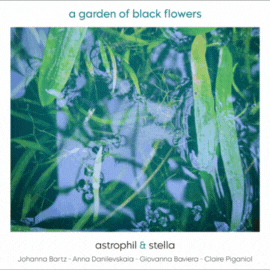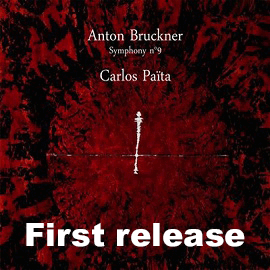Schumanns Vierte Symphonie in der Originalfassung von 1841 und der revidierten Fassung von 1851: Das sind, so steht es im Booklet, einerseits Florestan der Wilde und andererseits Eusebius der Milde.
Gemeinsam ist beiden Versionen der romantische Geist, der die Musik prägt und den John Axelrod ungehemmt betont, so wie er es vor Jahren in seinen Brahms-Einspielungen tat.
Er lässt das Bucharest Symphony Orchestra zudem extrem detailreich und ungemein farbig spielen, so dass die erste Version bei aller Wildheit (die sich nie in schnellen Tempi, sondern in ihrer musikalischen Dramatik zeigt) vor allem ausdrucksvolle Musik bleibt. Wo andere Dirigenten Tempo und Lautstärke zur Darstellung des musikalischen Geschehens benutzen, ist Axelrod der klug und spontan wirkende Sachverwalter, der seinen Orchesterklang mit größtmöglicher Transparenz flexibel formt, wobei nichts glatt ist, sondern alles üppig sprießt. Das Orchester folgt ihm dabei willig und mit spielerischem Elan.
Der Kontrast zur 1851er Version ist umso auffallender. Nicht, dass Eusebius Kampfer über die Partitur gestreut hätte, aber der Unterschied liegt vor allem in der « in den Tiefen seiner emotionalen Verzweiflung », wie John Axelrod im Textheft unterstreicht,.
Und so hören wir eine ganz andere Vierte Symphonie, die welche Clara Schumann bevorzugte, während Johannes Brahms eindeutig die erste Version vorzog.
Nun soll man nicht annehmen, John Axelrod habe die fettere Orchestrierung benutzt, um einen gebändigteren Klang zu produzieren. Nein, mit viel Energie und einem herausragenden Gespür für Rubato und Dynamik bringt er das Drama der Musik auch hier gut zum Ausdruck. Und mit rund 30 Minuten ist er gar nicht einmal so langsam (etwa gegenüber seinem Mentor Bernstein, der in seiner Wiener Aufnahme fast 34 Minuten brauchte). Axelrod ist in der zweiten Fassung lyrischer, gefühlvoller, aber bei der Suche nach dem unterschwelligen Drama und düsteren Klängen hat sich sein wacher Sinn für Details und Farben nicht verringert.
Die beiden Interpretationen sind also die perfekte Wiedergabe dessen, was im Booklet aus der Feder von John Axelrod steht: « Während ein Großteil seiner Musik und seiner Schriften seinen bipolaren Zustand widerspiegeln, sind diese beiden Veröffentlichungen, von denen eine während eines manischen Schaffensjahres und die andere in den Tiefen seiner emotionalen Verzweiflung geschrieben wurde, für mich die aussagekräftigste Darstellung dieses radikalen Romantikers. »
Schumann’s Fourth Symphony in the original version of 1841 and the revised version of 1851: these are, according to the booklet, Florestan the Savage on the one hand and Eusebius the Mild on the other.
Common to both versions is the romantic spirit that characterizes the music and which John Axelrod uninhibitedly emphasizes, as he did years ago in his Brahms recordings.
He also has the Bucharest Symphony Orchestra play with extreme detail and a lot of color, so that the first version, for all its wildness (which never shows itself in fast tempos but rather in its musical drama), remains above all expressive music. Where other conductors use tempo and volume to portray musical events, Axelrod is the clever and spontaneous administrator who flexibly shapes his orchestral sound with the greatest possible transparency, where nothing is smooth but everything sprouts lushly. The orchestra follows him willingly and with playful verve.
The contrast with the 1851 version is all the more striking. Not that Eusebius sprinkled camphor over the score, but the difference lies primarily « in the depths of his emotional despair, » as John Axelrod points out in the libretto.
And so we hear a very different Fourth Symphony, the one Clara Schumann preferred, while Johannes Brahms clearly preferred the first version.
Now let it not be assumed that John Axelrod used the fatter orchestration to produce a more subdued sound. No, with plenty of energy and an outstanding sense of rubato and dynamics, he expresses the drama of the music well here, too. And at around 30 minutes, he’s not even that slow (compared to, say, his mentor Bernstein, who took nearly 34 minutes in his Vienna recording). Axelrod is more lyrical, more soulful in the second version, but in seeking the underlying drama and somber sounds, his alert sense of detail and color has not diminished.
The two interpretations, then, are perfect renditions of what the booklet penned by John Axelrod says: « While much of his music and writings reflect his bi-polar condition, these two publications, one written during a manic creative year and the other in the depths of his emotional despair, provide for me the most telling representation of this radical romantic. »

























